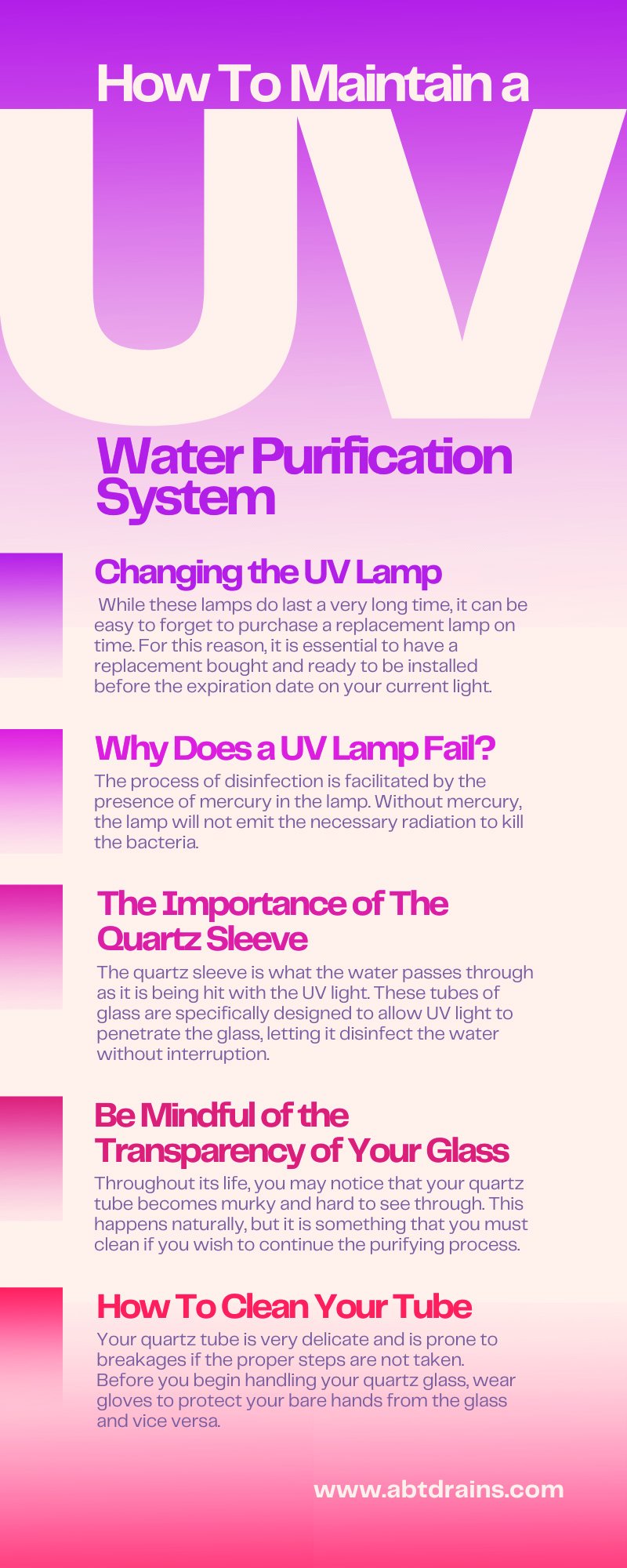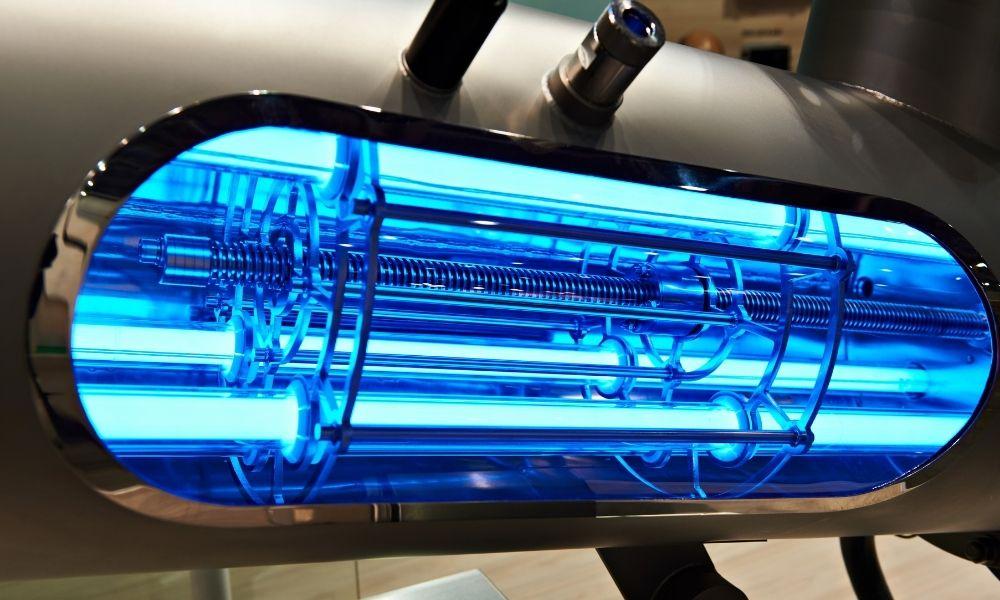Uncategorized
How To Maintain a UV Water Purification System
Purifying your home’s water through UV purification is one of the most efficient ways to kill harmful bacteria before they can pose a threat to you and your family. But you must also know how to maintain a UV water purification system to effectively prevent those same bacteria from coming through.
Neglecting your purification system’s regular maintenance can make you vulnerable to a microbial attack that can leave you, your family, and any guests in your home susceptible to infection. Eliminate that risk by knowing what you need to take care of your UV water purification system.
A Brief Explanation of UV Purification
The radiation emitted from UV lights can kill harmful bacteria such as salmonella and giardia. Your water is treated as it passes through the UV lamp that is emitting the UV-radiation light. The water passes through a quartz glass chamber, where it is exposed to UV light. This process does not add any harmful chemicals to your water and does not produce any adverse side effects to the water itself.
How To Maintain Your System
The two most essential pieces of equipment you need to maintain are the quartz glass chamber and the UV light itself. You are responsible for maintaining those two pieces of equipment, among several other small systems, and you need to know how to clean them or replace them when necessary.
Changing the UV Lamp
A UV lamp has an average lifespan of roughly 9,000 hours. This can equal out to about a year of life for one lamp, which makes an annual replacement necessary for continued use. While these lamps do last a very long time, it can be easy to forget to purchase a replacement lamp on time. For this reason, it is essential to have a replacement bought and ready to be installed before the expiration date on your current light.
Why Does a UV Lamp Fail?
The process of disinfection is facilitated by the presence of mercury in the lamp. When your light heats up, the mercury responds by emanating UV-C rays, the radiation that kills bacteria. Because of this process, the mercury inside the lamp depletes over time, and after 9,000 hours, all the mercury will be expended. Without mercury, the lamp will not emit the necessary radiation to kill the bacteria.
Repercussions of Failing To Replace the Lamp
After 9,000 hours, your UV lamp will not continue to disinfect the water, leaving you and your family open to harmful contaminants. Your lamp is what will kill bacteria in your water supply, and without that process (and unless you have a backup purification system), the water will come into your home with dangerous microorganisms.
The Importance of The Quartz Sleeve
The quartz sleeve is what the water passes through as it is being hit with the UV light. These tubes of glass are specifically designed to allow UV light to penetrate the glass, letting it disinfect the water without interruption. Using standard glass—the same that is used in windows—can block the UV rays from reaching the water, preventing it from purifying the water.
Be Mindful of the Transparency of Your Glass
Throughout its life, you may notice that your quartz tube becomes murky and hard to see through. This happens naturally, but it is something that you must clean if you wish to continue the purifying process. Once the glass tube becomes too hazy to see through, the UV rays will not be able to shine through the sediment buildup. The quartz glass will lose its transparency and will be rendered entirely useless, leaving your home vulnerable to dangerous bacteria.
How To Clean Your Tube
Your quartz tube is very delicate and is prone to breakages if the proper steps are not taken. Before you begin handling your quartz glass, wear gloves to protect your bare hands from the glass and vice versa. The glass is very sensitive, and your skin has natural oils that can cause the tube to smudge and lose its transparency.
Always use a soft cloth to clean the tube; coarse cloths can scratch the surface of the quartz. Use mildly acidic cleaning agents such as CLR or vinegar to remove scum from the surface of the tube. After cleaning, inspect the tube to make sure you have adequately cleaned it. Also, check to see if any cracks or scratches have appeared. If they have, you will need to purchase a new tube; any cracks can render your tube unsuitable for use.
The Lifespan of the Quartz Tube
On average, you should replace the quartz tube should every two to three years to maintain its effectiveness. Once it reaches the end of its life, it will no longer be clear enough to allow the UV rays to pierce through. At this point, no amount of cleaning will make your tube usable again; you must purchase a new one to guarantee safe drinking water.
While the quartz can last up to three years, you may need to replace it sooner because of how brittle the material is. It would also benefit you to have a spare tube in case it unexpectedly breaks while in the process of cleaning; if the tube cannot be used, the entire system cannot be used.
Steps To Replace Your Lamp
- Locate your water main and switch it off to stop the flow of water through your purification system.
- Switch off any power that is connecting to your UV system. If your purifier is still noticeably warm, wait until it cools down.
- Remove the lamp plug from its housing. Ensure you are wearing protective gloves during this process; your body’s natural oils may damage the components.
- Clean the quartz sleeve with a cloth soaked in CLR. Handle the sleeve with care, as it is very fragile.
- Install your new UV lamp into your assembly and place it back into its housing.
- Turn your water back on and inspect the area for any leaks.
Be Ready for Maintenance
Knowing how to maintain your UV water purifier means being prepared, whether that means knowing when it is time to replace the necessary components or planning ahead before systems can fail. Failing to prepare in the proper manner can put your health in danger and result in severe illness.


